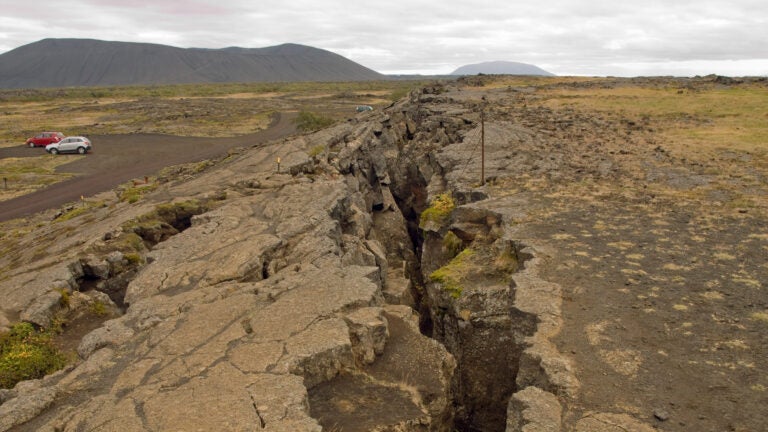The USC study found that when rock transitions from brittle to semi-brittle, a change occurs that is crucial to understanding rock mechanics and geology. (Illustration/iStock)
Science/Technology
Earthquake fault friction’s dependence on temperature different from previously thought
USC Dornsife Professor Sylvain Barbot discusses why his new study forces researchers to rethink the fundamental basis of the fault mechanics used in forecasting the seismic activity of earthquakes.
Earthquake researchers believed for decades that rock friction within fault lines follows a simple relationship with temperature.
However, a new study published by the Proceedings of the National Academy of Sciences led by USC suggests otherwise. Its findings reveal that different underlying mechanisms affect the frictional resistance of faults, challenging a common understanding of seismic activity among researchers.
“The classical view of fault friction has always been that fault friction evolves continuously with temperature,” said Sylvain Barbot, associate professor of earth sciences at the USC Dornsife College of Letters, Arts and Sciences. “But my study shows a direct effect of friction is largely unrelated to temperature up to the point of a rock’s brittle to semi-brittle transition, where temperature effects change drastically.”
Brittle transition
The research was conducted with data from experiments on various rock types, including granite, basalt and olivine, under conditions mimicking those deep in the Earth. Barbot found that when rock transitions from brittle to semi-brittle, a change occurs that is crucial to understanding rock mechanics and geology.
In a brittle state, rocks deform and degrade by fracturing and faulting. In a semi-brittle state, rocks exhibit a combination of brittle and ductile deformation, which is the process where rocks change shape permanently by “flowing” or “bending” under stress.

“Contrary to traditional models of rock friction behavior, I found that the direct effect of friction doesn’t always correlate with temperature,” Barbot said. Instead, there are abrupt changes in rock friction during the transition to semi-brittle behavior. “This means we need to rethink the fundamental basis of the fault mechanics used in forecasting the seismic activity of earthquakes.”
Rethinking earthquake behavior
In the context of rock friction studies, the direct effect of friction refers to the immediate change in friction in response to a sudden change in sliding velocity when two solid surfaces move relative to each other along a fault or fracture.
Most theories for friction are rooted in the belief that the speed at which two surfaces move relative to each other depends continuously on temperature. Barbot’s study challenges the previously assumed dependency of thermal activation, which will require predictive models of fault friction to be reconsidered to accurately predict earthquakes.
The next step of this research is to further refine the understanding of fault friction. Barbot said, “When incorporated into physics-based models of the seismic cycle, every refinement we discover has the potential to improve the accuracy and reliability of earthquake hazard assessments and long-term forecasts.”
About the study: This research was supported by the National Science Foundation under award number EAR-1848192.
